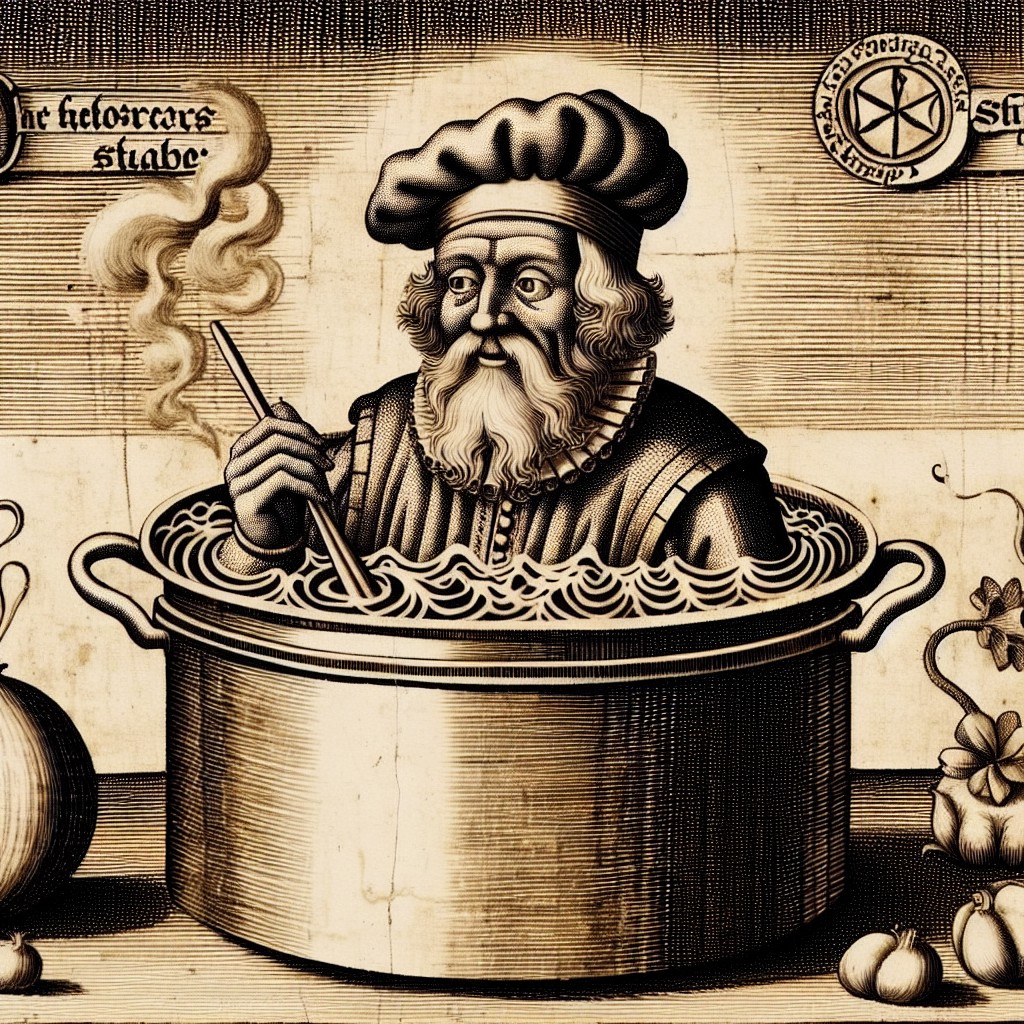Richard Roose
The cook who was boiled

Allegorical illustration by Richard Roose - AI generated image
The Middle Ages and the early centuries that followed have recounted numerous brutal executions, as well as the methods of torture employed to extract confessions. However, few can be deemed as painful and savage as the execution of Richard Roose (???? - 1532). Roose was a cook who lived during the reign of England's King Henry VIII. Little is known about his youth because he was an ordinary man—a "nobody" who silently passed through the pages of history. His infamy stems solely from the criminal case in which he became the central figure and the gruesome execution he faced.
Richard served as the cook in the household of John Fisher, Bishop of Rochester. Fisher had come into conflict with King Henry VIII due to his opposition to the monarch's marriage to a beautiful Englishwoman. Tensions between the clergyman and the king grew so severe that Fisher sought refuge in one of his residences, fearing retaliation. This tension reached its tragic climax in 1531 when, after a meal consisting of porridge or soup, two of Fisher's guests (including a relative of his) died, and many others fell gravely ill. Suspicion of poisoning—a serious crime at the time—fell on the cooks, particularly Roose.
A report from Parliament documented the incident as follows: "On the eighteenth day of February in 1531, a certain Richard Roose, of Rochester, a cook also known as Richard Cooke, poured poison into a vessel full of yeast, located in the kitchen of the Bishop of Rochester's residence at Lambeth March, resulting in the death of two individuals who, by chance, consumed soup made with said yeast."
Under torture, Roose confessed to poisoning the food (though it was likely a case of food contamination that spiraled out of control). He was deemed guilty of murder and poisoning without a fair trial, largely based on King Henry VIII's personal interpretation of the incident. Roose was subsequently taken to London and publicly boiled alive in a cauldron.
The execution caused widespread shock and horror among the public, who, distressed by Roose's screams, reportedly expressed a preference for a less cruel method of execution, such as beheading by an axe.
Michael Kerrigan, The Instruments of Torture, Spellmount Publishing, August 31, 2007
2025-07-03
Salvatore Ciccarello
